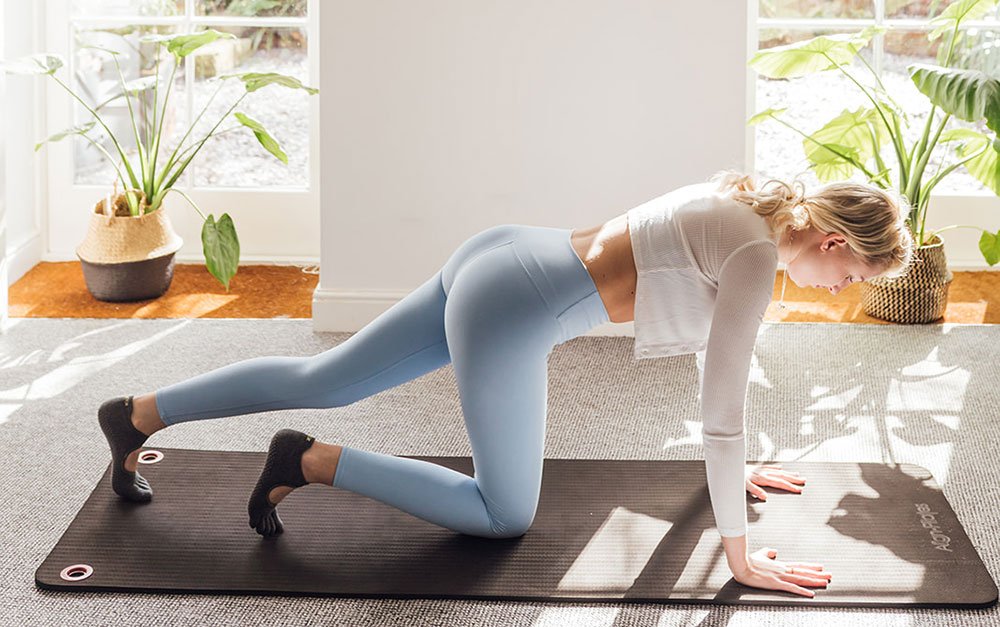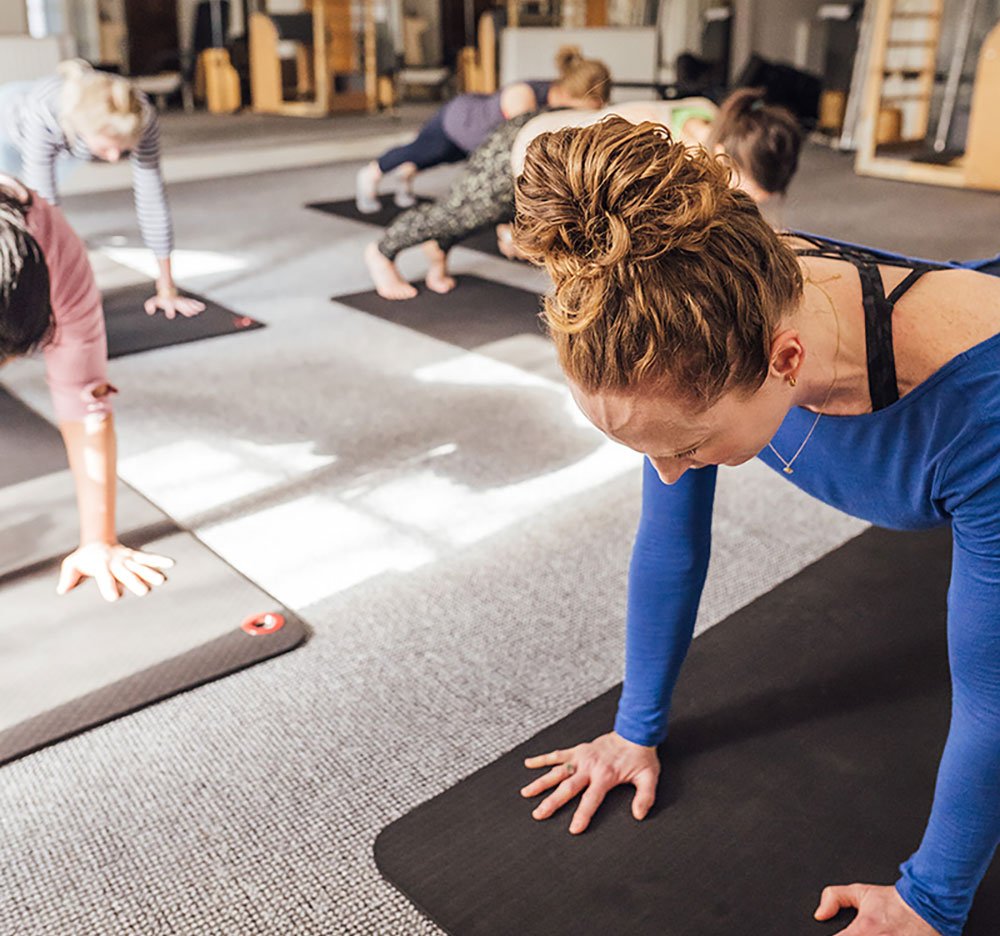Behind the Pilates Moves: Plank
Behind the Moves is our series of expert Pilates insights explaining the Pilates movements. Lauren Hilton shares her Pilates expertise on how each core Pilates movement benefits our bodies and minds, how to improve the movement in your own Pilates practice with pro tips on how it should feel, building your knowledge and understanding of the Joseph Pilates movement principles, and feeling the benefit of your improved Pilates practice.
Ever wondered about the why behind some of the Pilates movements you do in class? We delve a little deeper into a move per month so you can learn the benefits of the movements we’re offering our bodies and what those mean for our day-to-day movement and well-being.
Let’s talk about Pilates plank…
The exercise plank is not one of the original 34 Pilates mat exercises but is used as a starting position for leg pull front as well the Pilates push up and is taught during a Pilates class once you’ve learned to weight bear in your upper body and maintain a straight line on all-fours.
You can also see this plank shape in the Pilates equipment exercises, and on the reformer, the plank becomes more challenging with its moving base of support.
The exercise plank requires us to load our full body weight on our arms and shoulders and create a long straight line between head and heels. It can be challenging for many people because of the weight-bearing element to it as well as getting the balance between muscles in the front and back of your body to balance one other. Too little at the front and we’ll dip down and too much in the front we might lift our bottoms up!
Let’s guide you through the how and the why and offer up some alternatives if you struggle with weight bearing on the wrists or if you find the full exercise too challenging
(there’s a plank demo video at the bottom of this blog)
Plank is a starting position for many Pilates mat exercises, including leg pull front.
What to consider when you’re doing a plank
Can you feel your arms? Whilst plank is a strong abdominal exercise we need to consider the arms. Make the widest star position you can with your hands and position them directly under your shoulders, feel more weight (subtly through the little finger side of your hands). The hands press the ground away, the shoulders are wide and low on your back.
Where are your legs? As well as the arms we need to be aware of the legs to be successful in a plank. Both legs are long behind you with toes tucked under, and the balls of the feet are pressing the ground away with long-reaching heels. Can you imagine your legs are slightly turned out in the hips so you can feel energy running out of your inner seams?
What happens when you step back through the second leg? Does your bum lift or does your head go down? If so then it means you’re losing the alignment of your spine and therefore not using the abdominals. When you step out into the plank feel that your tailbone is lengthening towards your heels. You should feel long from pubic bone to chest. This means your abdominals will be switched on and your pelvis in neutral. If your pelvis tips anteriorly (arches) then the abdominals will be long and you’ll have a hard time getting your abdominals on board.
So what if the full planks feels too much for your wrists?
If you have trouble bearing weight on your wrists then why not try the plank on your forearms, it can be harder to find that long line in the body but it’s a great way of loading the upper body without loading the wrists.
Hannah preparing for the full plank position. You can practice hovering your knees from all-fours with toes tucked under before moving to the full plank.
How could I modify it if the full plank felt too much?
Firstly you could also try tucking the toes under in an all-fours position and practice hovering the knees just above the ground whilst maintaining the position of your pelvis and spine Once this feels easier then try it with long legs propping yourself higher up. Then you could elevate your body, so rather than being on the floor why not try having your hands on the Spine corrector or using the long box in the studio? If you’re at home you could practice using a chair against a wall.
How will this help me in my day-to-day?
It will make you feel stronger! Stronger in your arms and shoulders, stronger in your arms, and stronger in your back. All of these will feel beneficial to you in going about your day-to-day with ease and resilience. Because you are working on spine and trunk stability as well as shoulder strength so it works lots of things at the same time which is why plank is often the ‘go-to’ exercise I see many clients get prescribed by physios for core strength. It isn’t ‘the best’ exercise for core strength and there are so many others that do this job but you will get the benefits from good technique and regular practice.
Plank is something that you may need to build towards and should be avoided immediately after giving birth if you have a diastasis recti or a Pelvic organ prolapse or worries over continence. It’s not to say you can never do a plank with these conditions more that the strategy needs to be built slowly in order not to reinforce symptoms and cause further damage. Working with a knowledgeable and skilled teacher will help you build the foundations for bigger exercises slowly and safely.
Moving safely into the Pilates Plank excerpt from class #118 inside the Lauren Hilton Pilates At Home membership.
Lauren Hilton Pilates is a boutique Pilates studio specialising in mindful Pilates movement. Located in the heart of Shrewsbury our fully equipped studio has the ultimate Pilates experience for you.
Our class blocks are released each term (and fill up quickly). To be one of the first to receive our booking alerts, subscribe to our emails. Check out all our classes to find one that suits you where you are.
New to Pilates?
Let's get you started with our At Home Beginners Course, a perfect introduction to Pilates.
Can’t get to the studio or prefer to work out at home? Lauren Hilton Pilates At Home is made for you, with over 120 classes to choose from and 5 new classes each month.
See you in the studio or online studio soon!
Lauren x
Owner and Pilates teacher, Lauren Hilton Pilates, Shrewsbury
Photo credit: Florence Fox Photography





